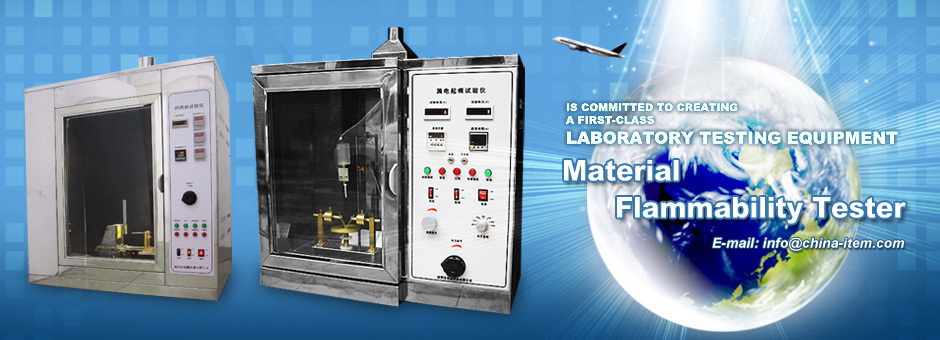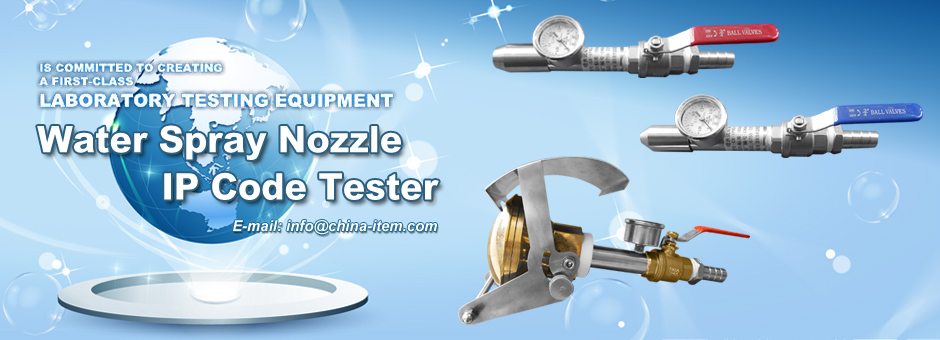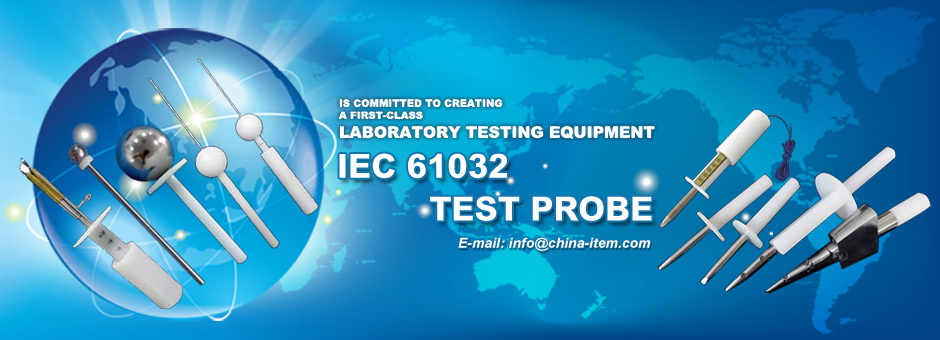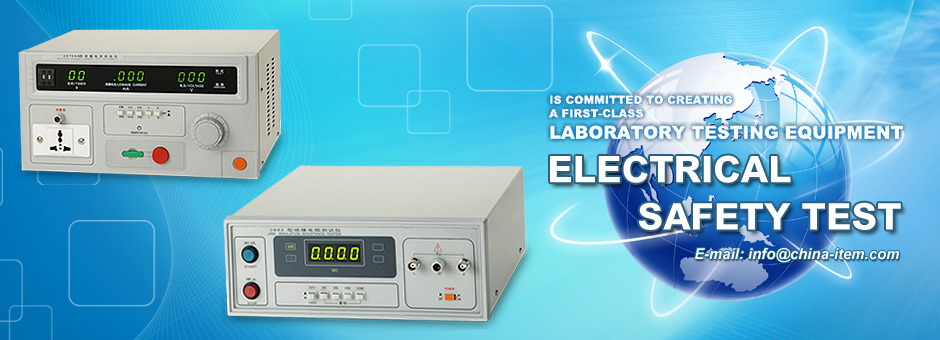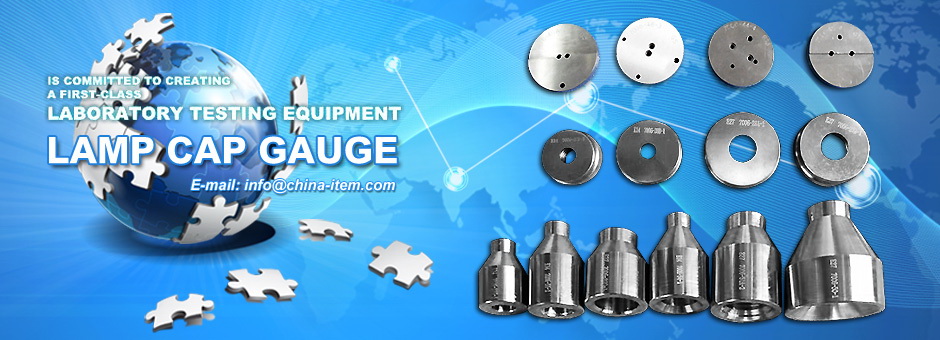contact us
products
- Main Products
- IEC Test Probe
- UL Test Probe
- Material Flammability Tester
- IP Code Tester
- Impact Test Apparatus
- Security Testing Machine
- Lamp Cap Gauge Tester
- Lampholders Gauge Tester
- Plug & Socket Tester
- Electrical Safety Tester
- LED Test Instruments
- Environmental Test Equipment
- Instrument Accessories
- Weighing Sensor
- Others Testing Equipment
technical articles
Company News
IEC 60601-1 applies to all electrical and electronic medical devices and their accessories. The 3rd edition is in the process of being adopted by global regulatory authorities. But on a national level, regulatory affectivity dates are not harmonized across global jurisdictions. Parallel use of 2nd and 3rd edition is expected through 2012. The requirement for 3rd edition does not apply to product deployed in the field, but it applies to new products going through regulatory approvals, as well as products currently shipping that are approved via the 2nd edition. In the EU, compliance with 3rd edition will be required to maintain the CE mark.
Battery chargers, affiliated with a medical device, and used in a medical environment are classified as an electrical medical device accessory. Examples of medical devices that use standalone battery chargers include surgical tools, ventilators, digital imaging plates, or defibrillators. Medical battery chargers destined for sale in Europe must be certified to EN 60601-1 3rd edition by June of 2012. The EN 60601-1 is based on the standard IEC 60601-1: 2005, which is the general safety standard for Medical Electrical Equipment - Part 1: General Requirements for Basic Safety and Essential Performance. This standard affects medical battery chargers that have embedded power supplies or utilize external AC/DC or DC/DC power adapters.
There are three regional variants: EN 60601-1 in Europe, ANSI/AAMI 60601-1 in the US, and CAN/CSA C22.2 NO. 601.1-M90 (R2005) in Canada.
For the EU, EN 60601-1 is a harmonized standard and is required for
Medical Device Directive for all device classes. Europe currently
accepts 2nd & 3rd edition, but 2nd edition will not be accepted
after June 2012, and 3rd edition becomes mandatory.
For Canada, CSA 22.2 is a recognized standard, and is required for
submissions for all class of medical devices. Canada currently accepts
2nd & 3rd edition, but 2nd edition will not be accepted after June
2012, and 3rd edition becomes mandatory.
For the US, ANSI/AAMI 60601-1 is a consensus standard and required for 510(k) submissions. The US currently accepts 2nd & 3rd edition, but 2nd edition will not be accepted after June 2013, and 3rd edition becomes mandatory.
For medical OEMs that offer battery chargers into Europe or Canada, there is a pressing deadline that requires all medical devices - including medical-grade battery chargers - be certified to EN 60601-1 and CSA 22.2 by June of 2012, respectively. Note that Europe and Canada will not allow the sale of battery chargers that are certified to EN 60601-1 and CSA 22.2 2nd edition after that date. So it is critical that OEMs with battery chargers get their system upgraded to 3rd edition before that deadline.
Relative to the 2nd Edition: IEC 60601-1: 1988, the 3rd Edition: IEC 60601-1: 2005 addresses the general requirements for basic safety and essential performance. The inclusion of "essential performance" is new, and this is performance whose absence or degradation would result in unacceptable risk, or render the equipment no longer capable of performing its intended use.
The major differences between the second and third edition of IEC 60601-1 are highlighted in the following paragraphs:
- Risk Management, Process Risk Analysis
-
Insulation Coordination
-
Temperature
-
Leakage Current
-
Mechanical Hazards
-
Clarifications on Fire Prevention Requirements
-
Clarifications on Component Requirements
- Labeling
Risk Management - Risk Management is an "integral part" of the standard. This requires a formal risk management process complying with ISO 14971. ISO 14971:2007 specifies a process for a manufacturer to identify the hazards associated with medical devices to estimate and evaluate the associated risks, to control these risks, and to monitor the effectiveness of the controls. Risks analysis must be used to determine acceptable risk levels for failure modes. ISO 14971 does not specify specific technical parameters or risk areas, such as device hazards, acceptable risk levels, risk analysis tools, or risk quantification methodologies. Critical documentation deliverables required for ISO 14971 include risk management files, plans, and reports.
Insulation Coordination - Changes are based on new views of Means of Patient Protection (MOPP) and Means of Operator Protection (MOOP). The primary change from 2nd to 3rd edition of IEC 60601-1 is the expansion of two original tables into nine new tables on insulation identification. Despite the more complex table structure in 3rd edition, it does provide for a more liberal view for operator protection. As an example of which, it allows use of non-medical IEC 60950-1 compliant power supplies.
Temperature - Third edition of IEC 6060-1 should require no functional changes to equipment meeting 2nd edition. Improvements to definitions used in tables of 2nd edition, as well as addition of some new parameters such as allowable maximum temperature (Table 22), external surfaces that are likely to be touched over time (Table 23), maximum applied part temperatures (Table 24). Plus, the 3rd edition allows a more liberal view on surface temperatures in brief contact with patient.
Leakage Current - Touch current replaces enclosure leakage current. Leakage current is measured to ensure that direct contact with the medical equipment is highly unlikely to result in electrical shock. Leakage tests are designed to simulate a human body coming in contact with different parts of the equipment. The measured leakage current values are compared with acceptable limits.
The leakage test is conducted before and after humidity conditioning at 93% +/- 3% RH. Components shall be kept in the humidity cabinet for 2 days for ordinary components with IPX0 rating and 7 days for components rated IPX1 to IPX7. Improvements in the 3rd edition of IEC 60601-1 include the definition of touch current replacing enclosure leakage (but measured parameters have not changed), earth leakage verbiage has been simplified with 5 mA in normal conditions and 10 mA in single fault conditions.
The specifications define several different kinds of leakage current, but the most important with respect to medical battery charger design are:
- Earth leakage current - Current flowing along the earth conductor
- Touch leakage current - Current flowing from the enclosure to earth via the patient
Maximum leakage current is defined for three main types of applications with respect to IEC 60601-1:
- Type B - Equipment where there is no physical contact with the patient e.g. medical battery chargers, ear examination equipment
- Type BF - Equipment where there is intentional physical contact with the patient e.g. ultrasound, monitors, ventilators.
- Type CF - Equipment where there is intentional cardiac physical contact with the patient e.g. defibrillators, heart monitors
A common misunderstanding is that leakage current specifications vary within these types of applications. In fact, in all of these classes of application, the allowable leakage current is the same. But note that there are differences in the permissible leakage current levels between EN 60601-1 and ANSI/AAMI 60601-1. For example, EN 60601-1 limits leakage current to 0.5mA in Europe, while ANSI/AAMI 60601-1 specifies 0.3mA is permissible in the US. Therefore, medical equipment designers need to appreciate where their systems may be sold.
Mechanical Hazards - The 3rd edition of IEC 60601-1 has many changes to the parameters defining mechanical hazards. Examples of the parameters that have changed include crushing, shearing, cutting, punctures, entanglement, instability, etc. Additionally, the third edition includes new parameters for vibration and noise that were not covered in the second edition.
Clarifications on Fire Prevention Requirements - The 2nd edition of IEC 60601-1 had no requirements for fire enclosure , although they were addressed in ANSI/AAMI 60601-1. The ANSI requirements have been incorporated into the 3rd edition of IEC 6060-1. For enclosures, insulated wires shall have flammability FV-1, or better, in accordance with IEC 60695. For connectors, printed circuit board, and insulating material on which components are mounted shall have flammability FV-2, or better, in accordance with IEC 60695.
Clarifications on Component Requirements - If a component is used as means for protection, that component must meet the requirements via references to the affiliated IEC component standards. If a component is critical to reliability or protection, then that component requires reliability assessment.
Labeling - New symbols and signs have been added to the labeling specification. "Caution" used to be "Consult accompanying documents". Symbols have been standardized. Additionally, more emphasis is applied to operating instructions to eliminate user error during operation.
Electrochem has developed many medical battery chargers that have received approval for both second and third edition IEC 60601-1 standard. Applicable skillsets utilized in these developments include electrical engineering, mechanical engineering, risk management processes, and regulatory agency management. Additionally, we have enabled medical OEMs to upgrade their medical battery chargers, with approval to 2nd generation IEC 60601-1, to the 3rd edition of this standard.




